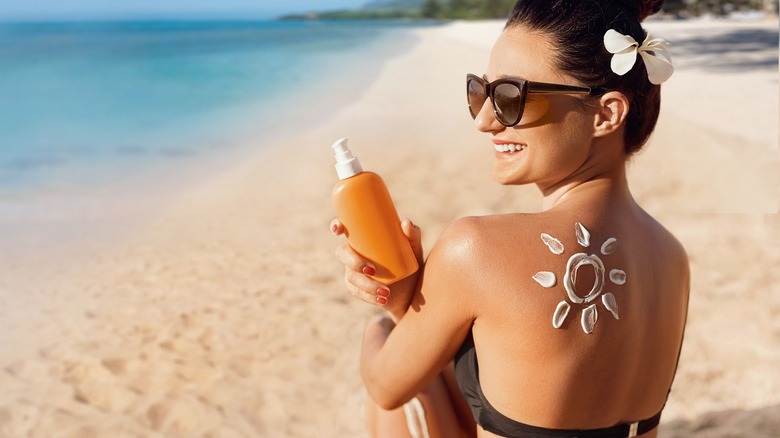Will Tanning In The Summer Change Your Skin's Undertone?
Summer is on the horizon! It is the season for basking on beaches and poolsides, soaking up the gleaming sun, and catching some much-needed vitamin D. Staying out under the sun helps boost serotonin levels and makes your mood even better and brighter. Everyone loves coming home with a perfect tan after a day of memorable summer fun!
When summer hits, people tend to tan, whether they're intentionally trying to get sunkissed color or it happens just by virtue of being outside. Dermatologist Aanchal Panth, MD, explained that tanning is "a protective mechanism where skin makes melanin to reduce the amount of damage due to sun exposure. If we didn't tan, we would burn. So tanning is actually protecting our skin from premature aging. If you continue sun exposure, you will continue to tan" (via The Indian Express).
Be cautious though, as tanning, whether indoors in a tanning salon or outdoors under the sun, can increase your risk of skin cancer. Even if it is better than a burn, tanned skin is a sign that the skin has been damaged due to over-exposure to ultraviolet radiation from the sun. This can lead to skin aging in the form of wrinkles and age spots. Since tanning can have such a huge effect on the skin, you might be wondering: Can tanning affect your skin's undertone?
Seasons change, but undertones remain the same
No matter how much sunlight you get, even if you're pale in the winter and get tan in the summer, your undertone remains the same. Ramy Gafni, creator of Ramy Cosmetics, told Oprah Daily, "Undertones do not change. They may become more noticeable over time. For instance, if someone has pink undertones and they get sunburned or develop rosacea, then pink undertones may become more visible, but the undertone itself remains the same." While a sunburn can help you identify your undertone, it won't actually affect your skin's undertone.
Another case in point: Two different people can have pale, light complexions, but one can have a peachy undertone while the other might have a blue undertone. Gafni noted that undertones can be warm, cool or neutral. "Just like the color spectrum, your undertone falls into one of these categories. Yellow, peachy undertones are warm. Pink and blue undertones are cool while olive undertones can be neutral or warm," he elaborated. So regardless of how tanned (or not tanned) someone is, their undertone is unaffected.
Skin tone vs. undertones: What's the difference?
In a nutshell, tanning will affect your skin tone, but never your skin's undertones. As Tiffany Torrence, licensed aesthetician, make-up artist, and founder of the Skin and Body Klinic, explained to Essence, "Skin tone can change over time for a variety of reasons, but undertones remain constant — yes, even when you tan." Undertone is often one of the most misunderstood or disregarded elements of our skin. Know the distinction between skin tone and undertone is important, because these two can't be treated interchangeably.
Skin tone is the actual surface color of your skin that people see. Your skin tone can be light, fair, medium, or dark. Undertone, on the other hand, is the one beneath your skin, and has three variations: warm, cool and neutral, as mentioned earlier. A warm undertone can be seen on those with hints of peach or yellow in their skin, a cool undertone is for those with hints of blue or pink, and a neutral undertone is the balance between both warm and cool undertones. People with warm undertones typically have green or olive veins in their wrist, those with cool undertones have blue or purple veins, and those with neutral undertones have blue-green veins. It might sound tricky, but there are easy ways to determine your skin's undertones.


